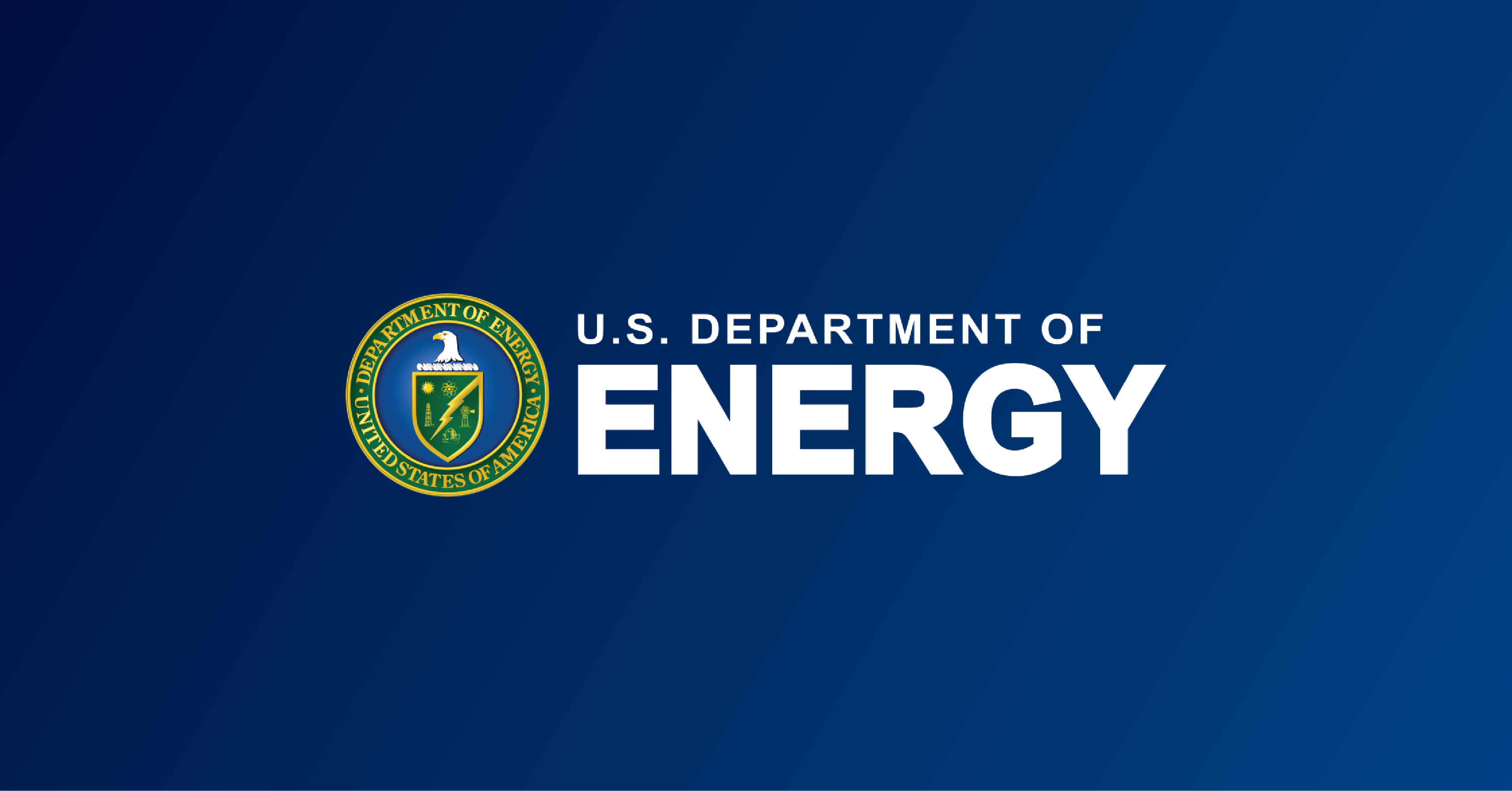Biden-Harris Administration Announces $400 Million for States to Improve Building Energy Efficiency, Save Consumers Money, and Make Buildings More Climate Resilient
Biden-Harris Administration Announces $400 Million for States to ... Energy.gov


U.S. Department of Energy Releases Program Guidance and Funding for Building Energy Codes

WASHINGTON, D.C. — In support of President Biden’s Investing in America agenda, the U.S. Department of Energy (DOE) has announced the release of program guidance and the opening of applications for $400 million in formula funding to states and territories. This funding aims to support the adoption and implementation of building energy codes that align with the Sustainable Development Goals (SDGs), including reducing utility bills, increasing efficiency, lowering greenhouse gas emissions, and improving resilience to climate disasters. The funding is made possible by President Biden’s Inflation Reduction Act (IRA), which is the largest climate and clean energy investment in history. States can now access this funding to promote the adoption and implementation of the latest building energy codes and zero energy codes, contributing to the development of cleaner and more efficient buildings nationwide. This announcement coincides with Climate Week 2023, an annual event that brings together leaders from civil society, business, academia, and advocacy groups who are committed to taking bold climate action.
Significance of Building Energy Codes
Homes built to today’s energy codes are nearly 40% more efficient than homes built just 15 years ago, resulting in significant energy cost savings for consumers. If all states were to update their energy codes to the latest models, it would save enough energy over 30 years to power all households in the United States for an entire year. Additionally, this transition would lead to a reduction of almost 2 billion metric tons of CO2 emissions, equivalent to removing over 445 million gas-powered cars from the road over the same 30-year period.
Statement from U.S. Secretary of Energy, Jennifer M. Granholm
U.S. Secretary of Energy, Jennifer M. Granholm, emphasizes that transitioning to a clean energy economy involves more than just adding clean energy to the electric grid. It also requires revitalizing and fortifying existing infrastructure. Granholm expresses gratitude for President Biden’s Investing in America agenda and highlights that the funding provided will empower states and local communities to enhance the performance and overall health of buildings through energy codes. This will not only improve infrastructure nationwide but also contribute to the well-being of local communities.
Funding Details
The Inflation Reduction Act allocates $1 billion for state and local governments to adopt and implement the latest building energy codes, zero energy building codes, or equivalent codes and standards. The DOE has released a portion of this funding through formula to support states in advancing more efficient building energy codes. The funding is divided into two categories:
- $240 million is available for adopting and implementing the latest building energy code, specifically the 2021 International Energy Conservation Code (IECC) for residential buildings and the ANSI/ASHRAE/IES Standard 90.1–2019 for commercial buildings, or other codes that achieve equivalent or greater energy savings.
- $160 million is available for adopting and implementing the zero energy provisions in the 2021 IECC, or other codes with equivalent or greater energy savings.
Support for States
The DOE has provided an Administrative and Legal Requirements Document (ALRD) that offers federal guidance to states on adopting and implementing building energy codes. The ALRD supports states in activities such as adoption, implementation, enforcement, and measuring compliance rates of specified building energy codes. It also focuses on training and educating the workforce and building localized capacity. These efforts will improve residential and commercial new construction and major renovations, facilitating the transition to more efficient and resilient decarbonized buildings. States interested in accessing the funding must opt-in and submit letters of intent to the DOE by November 21st.
Furthermore, the DOE plans to release a competitive funding announcement in the coming months to provide direct support to states and local governments with code adoption authority for more innovative code approaches, including building performance standards.
Alignment with Sustainable Development Goals
The DOE’s Office of State and Community Energy Programs is overseeing the administration of this program, ensuring that nonprofits, industry leaders, and states are prepared to deliver energy efficiency projects that contribute to decarbonizing buildings. The program aligns with President Biden’s Justice40 Initiative, which aims to ensure that 40% of the overall benefits of federal clean energy investments reach energy-burdened and disadvantaged communities. It also supports President Biden’s National Initiative to Advance Building Codes, which accelerates the adoption of modern building codes to protect people from extreme weather events and save communities an estimated $1.6 billion annually in avoided damages.
For more information, visit the IRA Funded Technical Assistance for Building Energy Codes program webpage.
SDGs, Targets, and Indicators
1. Which SDGs are addressed or connected to the issues highlighted in the article?
- SDG 7: Affordable and Clean Energy
- SDG 9: Industry, Innovation, and Infrastructure
- SDG 11: Sustainable Cities and Communities
- SDG 13: Climate Action
2. What specific targets under those SDGs can be identified based on the article’s content?
- SDG 7.3: By 2030, double the global rate of improvement in energy efficiency.
- SDG 9.4: By 2030, upgrade infrastructure and retrofit industries to make them sustainable, with increased resource-use efficiency and greater adoption of clean and environmentally sound technologies and industrial processes.
- SDG 11.6: By 2030, reduce the adverse per capita environmental impact of cities, including by paying special attention to air quality and municipal and other waste management.
- SDG 13.2: Integrate climate change measures into national policies, strategies, and planning.
3. Are there any indicators mentioned or implied in the article that can be used to measure progress towards the identified targets?
Yes, the following indicators can be used to measure progress towards the identified targets:
- Energy savings achieved through the adoption and implementation of building energy codes.
- Reduction in utility bills for consumers.
- Reduction in greenhouse gas emissions.
- Increase in energy efficiency of buildings.
- Number of states and territories adopting and implementing the latest building energy codes.
Table: SDGs, Targets, and Indicators
| SDGs | Targets | Indicators |
|---|---|---|
| SDG 7: Affordable and Clean Energy | SDG 7.3: By 2030, double the global rate of improvement in energy efficiency. | – Energy savings achieved through the adoption and implementation of building energy codes. – Reduction in utility bills for consumers. |
| SDG 9: Industry, Innovation, and Infrastructure | SDG 9.4: By 2030, upgrade infrastructure and retrofit industries to make them sustainable, with increased resource-use efficiency and greater adoption of clean and environmentally sound technologies and industrial processes. | – Increase in energy efficiency of buildings. – Number of states and territories adopting and implementing the latest building energy codes. |
| SDG 11: Sustainable Cities and Communities | SDG 11.6: By 2030, reduce the adverse per capita environmental impact of cities, including by paying special attention to air quality and municipal and other waste management. | – Reduction in greenhouse gas emissions. – Increase in energy efficiency of buildings. |
| SDG 13: Climate Action | SDG 13.2: Integrate climate change measures into national policies, strategies, and planning. | – Reduction in greenhouse gas emissions. – Number of states and territories adopting and implementing the latest building energy codes. |
Behold! This splendid article springs forth from the wellspring of knowledge, shaped by a wondrous proprietary AI technology that delved into a vast ocean of data, illuminating the path towards the Sustainable Development Goals. Remember that all rights are reserved by SDG Investors LLC, empowering us to champion progress together.
Source: energy.gov

Join us, as fellow seekers of change, on a transformative journey at https://sdgtalks.ai/welcome, where you can become a member and actively contribute to shaping a brighter future.







